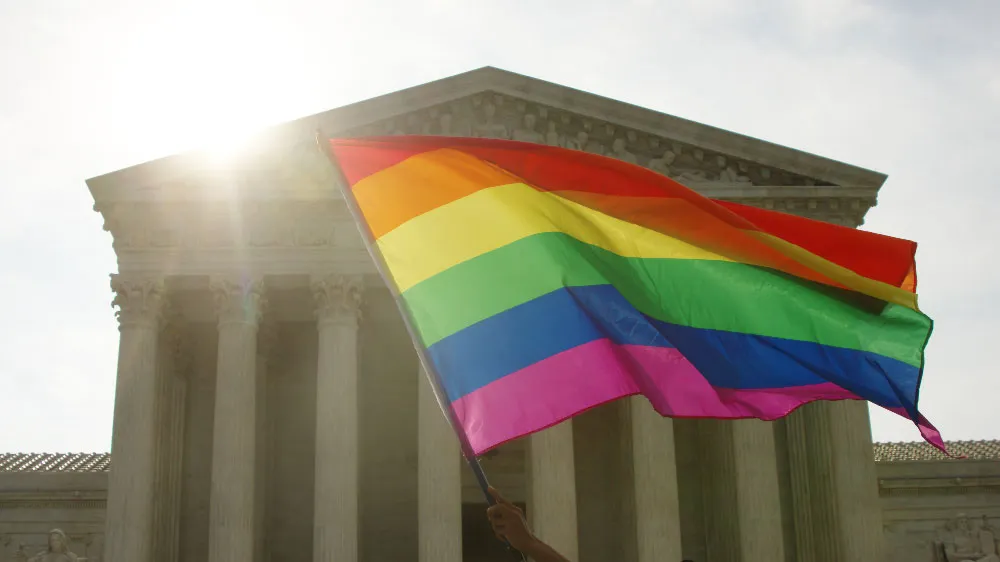September 19, 2013
Study Investigates LGBTQ Dating Violence Risks
David Perry READ TIME: 4 MIN.
A recently released study by the Urban Institute suggests that high school-aged LGBTQ youth face higher rates of abuse from their dating partners.
While violence against LGBTQ people is already an established fact, having led to hate-crime legislation in several states and municipalities, this study is one of the first to statistically detail violence originating from romantic partners when the victim is still in the process of developing their sexual/gender identity and its ramifications.
"Dating Violence Experiences of Lesbian, Gay, Bisexual, and Transgender Youth", by Meredith Dank, Pamela Lachman, Janine Zweig and Jennifer Yahner, was based on a larger study funded by the National Institute of Justice, Office of Justice Programs, U.S. Department of Justice. The study looked at all forms of violence, including non-physical types such as cyberbullying.
"There were anecdotal stories and some statistics being thrown out there about how technology and social media would be used to perpetrate and victimize teens, particularly teen dating violence," explains lead writer Meredith Dank, a senior research associate at the Urban Institute. "However, there was no empirical research statistics done to actually estimate the prevalence of this, and how the abused were using technology and social media. There was little to no research in the past the looked specifically at the LGBT population."
A total of 5,647 youth (51 percent female, 74 percent White) in the seventh to the 12th grades from 10 schools participated in a cross-sectional anonymous survey, of which 3,745 reported currently being in a dating relationship or having been in one during the prior year. Six percent identified as lesbian, gay, bisexual, or transgender, the rest as heterosexual.
In a confirmation of the anecdotal evidence, Dank and her team found that lesbian, gay, and bisexual youth are at higher risk for all types of dating violence victimization compared to their heterosexual peers. Of the LGBT respondents, 43 percent reported being victims of physical dating violence, compared to 29 percent of heterosexual youth;? 59 percent reported emotional abuse, compared to 46 percent of heterosexual youth;? 37 percent reported digital abuse and harassment, compared to 26 percent of heterosexual youth; and? 23 percent reported sexual coercion, compared to 12 percent of heterosexual youth. Although a small number, the 18 transgender youth surveyed had the highest rates of victimization: 89 percent reported physical dating violence, 61 percent were sexually coerced, 59 percent experienced emotional abuse, and 56 percent recorded digital abuse and harassment.
The research team found that LGBT teens were also more likely to be perpetrators of the same kinds of violence.
"We do not know exactly if that is offensive or defensive behavior," Dank said. "We don't know if they are retaliating against somebody who is initiating that kind of violence."
Where Do We Go From Here?
"Dating Violence Experiences of Lesbian, Gay, Bisexual, and Transgender Youth" is one of the first examinations of dating violence and abuse through the distinct lens of sexual orientation and of gender identity. Victims are more likely to be females or transgender youth who are also more likely to be depressed, have lower grades, have committed delinquent acts and to have a history of sexual activity.
"We looked at cyber bullying and the overlap between cyber bullying and cyber teen dating violence and there is an overlap," Dank tells EDGE. "Victims experiencing one of those are often experiencing the other. I think there is a lot that still needs to be addressed, but I think that, hopefully, this report will allow people to gain some perspective and start working on some programs. We also need more research around how, why, when-all of those things."
Dank was quick to note, however, that victims of teen dating violence, particularly LGBT victims, are taking a more prominent stand in their own defense by alerting authority figures, who appear to be growing more sympathetic and aware of the problem.
"LGBT youth are more likely that heterosexual youth to seek help, particularly after the first incident and within the same day, so I think that is very promising," Dank observes. "Hopefully, schools and social workers and even parents can capitalize that. Given such high rates of victimization, helping these young people is especially important since teen dating violence can be a stepping stone toward adult intimate partner violence."
To prevent dating abuse, Dank checks off an array of measures addressing the needs and vulnerabilities of LGBT youth.
"We could train school personnel and counselors, and even parents to look for signs if their child or a student at the school is experiencing teen dating violence," she recommends. "Have more conversations around this, develop more programming around this, and really try to better understand how technology and social media is being used. Hopefully, with some of these findings, schools and parents will take notice."
David Perry is a freelance travel and news journalist. In addition to EDGE, his work has appeared on ChinaTopix, Thrillist, and in Next Magazine and Steele Luxury Travel among others. Follow him on Twitter at @GhastEald.



